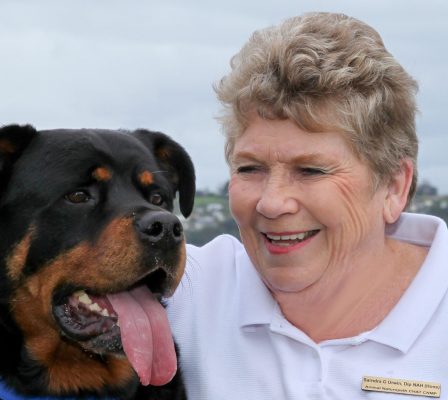Call us 027 448 3322
Pottenger’s Cats
Francis M Pottenger , Jnr, was a MD and wrote a fascinating book on cat nutrition.
Between the years of 1932 and 1942 he conducted a feeding experiment to determine the effects of heat-processed food on 900 cats.
Obviously we are not fans of experiments but the outcome of this study proved of great interest to all who currently feed dried/processed or cooked food to their cats.
An important note is that , unlike many pet studies, this one had notes for the entire NATURAL life, (ie not ended after a few weeks/months study like most of the pet food manufacturers and AAFCO studies.
At the end of the 10 year studies 600 of 900 cats studied had complete recorded health studies.
RAW MEAT GROUP
Cats fed a diet of 2/3 raw meat, 1/3 raw milk and cod liver oil showed striking uniformity in their size and skeletal development including facial features, nasal cavities, and dentition. The male/female differentiations were maintained. Membranes were excellent, tissue tone and fur of good quality. Little shedding noted. Male fighting which may have meant missing incisors demonstrated little inflammatory action or disease of gums.
The calcium/phosphorus content of femurs remained consistent, internal organs showed full development/normal function. Over their life spans, they proved resistant to infections/fleas/various other parasites and no allergies signs. Behaviour – gregarious, friendly, predictable. Reproduction – kitten good average weight at birth; miscarriages rare, litters averaged 5 kitts, nursing without difficulty.
COOKED MEAT GROUP
Cats fed diet of 2/3 cooked meat, 1/3 raw milk. Cod liver oil. Produced a heterogeneous strain of kittens, each kitten in a litter being different in size & skeletal pattern. X ray comparisons showed many variations in the facial and dental structures of the 2nd and 3rd generation cooked-meat-fed animals.
Evidence of suspected ‘dietary’ deficiencies plainly observable.
The long bones tend to increase in length and decrease in diameter with hind legs commonly increasing in length over the forelegs. The inner structure of the bone (the trabeculation) became coarser, with evidence of less calcium. In the 3rd generation, some bones were soft and osteogenesis imperfecta (inherited condition in which bones are abnormally brittle and fracture easily) is present.
Infections of the bone often appear to be the cause of death
Other problems included heart problems, nearsightedness/farsightedness, under active thyroid or inflammation of the thyroid gland (the latter not observable in raw-fed cats); infections of kidneys, liver, testes, ovaries and bladder; arthritis of joints,; nervous system paralysis and meningitis. Interesting also was a decrease in visceral volume with a diminishing size of the thoracic and abdominal cavities. A study of the lung tissue in 2nd and 3rd generation deficient cats showed abnormal respiratory tissues.
Cooked-meat-fed cats shoed more irritability, a propensity for females to bite and scratch. The males became more docile and sexual interest diminished or perverted between their own sex.
Parasites & skin lesions common, diarrhea takes heavy toll of kittens.
Birthing became difficult, kitten mortality higher, infertility became an issue.
Average weight of kittens 19 grams less than raw-fed nurtured kittens.
Regenerating Cats – that is, cats returned to raw-fed diet.
It takes 4 generations to regain near-normal health.
A discovery is that once a female cat is subjected to a deficient diet for a period of 12-18 months her reproductive efficiency is so reduced that she is never able to birth normal kittens, who still show signs of skeletal and dental deficiencies.
RAW MILK v. COOKED MILK EXPERIMENT.
4 Groups trialed:
Group 1 – diet of 2/3 raw milk, 1/3 raw meat. Cod liver oil
Other groups 2/3 pasteurised milk, 2/3 evaporated milk or sweetened condensed milk plus 1/3 raw meat and cod liver oil.
The results corresponded to the raw v. cooked meat diet fed cats.
Cats fed evaporated milk showed even more damage, and those on sweetened condensed milk developed much heavier fat deposits and exhibited severe skeletal deformities. They all showed extreme irritability and paced back & forth in their pens *
DEDUCTIONS’
- Meat in this era would have been more free of contaminants, sprays, drenches etc.
- Cooking food, including meat, reduces some vitamin & mineral content and this must be kept in mind.
- Cod liver oil can be fed in excess to the detriment of the animal.
- Cats in our era have usually been de sexed before any evidence can be demonstrated as in the experiment; however avoidance of sexual activity can produce it’s own problems in bone/ growth/maturity/behavioral aspects.
- The cats in this experiment would not have been able to perform normal whole outdoor/natural activities and this would introduce a stress element so matter how careful the breeding program was maintained.
- Sugar, in any form, is totally foreign to our carnivores in the wild; the milk test may have come as little surprise.
HOWEVER:
It does demonstrate that processed food (by cooking, additives, any changes made to the original food) can make changes in the target species. If we consider that with the ‘recent’ advent of canned, dried (kibble), cooked biscuits, air-dried, freeze-dried, even frozen food etc there MUST be some physiological and mental changes made in the cat or dog.
Worthy of consideration, even in the human species..
* See children like that!
.

